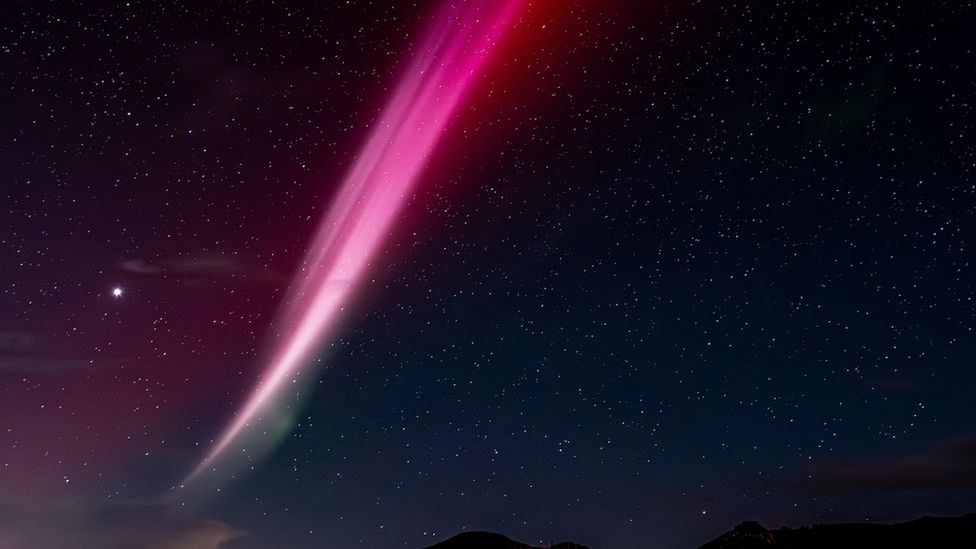-

-
-
Loading

Loading

The name "Steve" was illuminated in the sky on Sunday night, catching the attention of many. Steve is a rare phenomenon that is not often seen in the skies of the UK. There were some reported sightings earlier this year in March and in the Shetland Islands. However, Steve made another appearance, this time lighting up the skies over the north-east of England and Scotland. The purple ribbon-like glow seen in Northumberland, County Durham, and Argyll is a relatively new scientific discovery. While it is not technically an aurora, it is often associated with the more well-known aurora borealis, or Northern Lights, which were also seen in parts of the UK on Sunday. The images of Steve were captured by BBC Weather's Weather Watchers and shared with the public. The phenomenon has been photographed for many years, but it was only named Steve in 2016 following a citizen science project funded by Nasa and the National Science Foundation. The inspiration behind the name came from a scene in the animated movie "Over the Hedge" where animals encounter a hedge and call it Steve to make it less intimidating. Scientists later turned the name into an acronym - "Strong Thermal Emission Velocity Enhancement". Not only sky-watchers have shown interest in Steve; in 2019, the Canadian government even minted a collector's coin featuring the mysterious streaks of light. However, little is known about its formation and why it appears during an aurora display. Nasa's Goddard Space Flight Center has been studying Steve using ground pictures and satellite data. Unlike the typical oval shape of auroras, Steve appears as a ribbon and lasts for 20 minutes to an hour before disappearing. It is believed to be a subauroral ion drift, or SAID, which consists of fast-moving streams of extremely hot particles. Due to its unpredictable nature and short duration, recording Steve from the ground is rare. However, it has been reported in various locations, including the UK, Canada, northern US states, and New Zealand. In the case of Sunday night, the aurora borealis was visible across the entire UK due to a geomagnetic storm caused by a strong solar wind that sent charged particles towards Earth. These particles interacted with oxygen and nitrogen in the atmosphere, creating the vibrant colors associated with the Northern Lights.